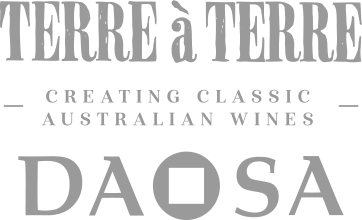The following article comes from Grapegrower & Winemaker, the original can be found here: http://grapegrowerandwinemaker.wordpress.com/2013/11/11/bizot-and-croser…
XAVIER BIZOT KNEW enough about corporate law that he knew he wanted to become a vigneron so he and his family packed their bags, bid Paris a fond adieu and headed for the Adelaide Hills Down Under.
It’s another French revolution.
But in wine.
And in a place as Down Under as Wrattonbully.
As well as the Piccadilly Valley in the Adelaide Hills – where the traditions are decidedly more Teutonic than Gallic – and the Fleurieu Peninsula, where the cool crowd (and climate) can be found.
Initially it might be a tad tricky to keep up with Xavier Bizot’s rush of French-fractured English but in the end, that doesn’t matter.
Because his infectious enthusiasm (and why wouldn’t he be enthusiastic, he had given up a career in corporate law) more than gets the message across.
Here is a scion of centuries of viticultural and winemaking tradition hailing from Ay, in the heart of Champagne, and greatly enamoured of life, and opportunity, in Australia.
Of course marriage to Lucy Croser was an immediate entrée to the inner circles of Australian wine royalty.
But the family did start life together in Paris until a holiday here convinced Xavier his growing clan would be better off spreading out in Oz than being crammed into the City of Light.
SPREADING BUSINESS
So the Bizot/Crosers arrived at/returned to the Adelaide Hills in 2005 where Xavier launched into oenology and viticulture at the University of Adelaide and the couple launched their own wine importing and distribution business.
Today they have Terre à Terre (translation: ‘down to earth’) a close-spaced 7ha vineyard next to Tapanappa’s Whalebone Vineyard, at the top of a north-south limestone ridge in Wrattonbully.
Which Xavier describes as one of Australia’s most exciting regions.
He says the climate is similar to Saint Emilion in France so the first vines were planted in 2004 with 2ha of Sauvignon Blanc and 3ha of Cabernet Sauvignon. In a 2008 expansion, 1ha each of Cabernet Franc and Shiraz were added.
Lucy and Xavier also produce a single vineyard sparkling wine from their grapes in the Piccadilly Valley. The wine, like the vineyard, is named Daosa.
They also have a Down To Earth label (translation: Terre à Terre) to add that dramatic touch of Down Under.
Xavier says the vineyard is planted at a relatively high density for Australia at 4444 vines per hectare, which is at a spacing of 1.5m x 1.5m.
“In 2009 Terre à Terre released its first wine from this vineyard, the 2008 Terre à Terre Wrattonbully Sauvignon Blanc,” Xavier says.
“We have since released both a 2009 and 2010 vintage of this wine and in 2011 expanded with the release of the 2009 Terre à Terre Wrattonbully Cabernet Sauvignon,” he says.
“Terre à Terre’s focus is on producing small batches of handcrafted wines coming from our fruit in Wrattonbully, which is north of Coonawarra and south of Padthaway.
“The South-East is good for grapes, it is the same as Bordeaux. We are hand pruned, hand managed and hand harvested, and only use sulfur and copper and if we could be bothered with the paperwork we could probably be organic.
“We also have a third vineyard on the Fleurieu Peninsula at Parawa which is also a very cool climate, and good for producing a very South Australian fruit.”
HITTING THE HEADLINES
Xavier hit the headlines earlier this year when he was quoted as saying the Australian wine industry was not just Down Under, it was upside down.
He simply could not understand why the winemaker got so much attention and credit when he said: “Australia is good at talking about the winemaker, but it should talk more about the vineyards – and there are fantastic and very old vineyards”.
“It is a very French (pronounced Fronsh) approach to vineyards, it is all about the vineyard but here the winemaker is the most important.
“That is OK. It is just part of the story, but it is surprising when people don’t know much about where the grapes came from for, say a Grange, but they know so much about the winemaker.
“Fruit makes 80 per cent of the wine. But this is not a criticism of Australia, it is just the way it is and I think it is an evolutionary thing, not a bad thing.”
And while the vineyards here may not be as old as those in la belle France, the ones in the South-East are planted in some spectacularly ancient soils with limestone covered by cherished terra rossa soil.
“Our Terre à Terre block sits on the crest of a north-south Oligocene limestone ridge which is at least 35-million-years-old,” Xavier says.
“On its eastern flank, a layer of Bridgewater eolian sands covers the ancient terra rossa soil,” he says.
“Brian’s (Croser) Whalebone vineyard next door was named after fossils found in a cave under it which were tested to be 38-million-years-old, which let him date the limestone.”
Xavier is, not surprisingly, very expansive on terroir.
It is the essence of everything he declares, not just the vineyard, but the wine and beyond that the strength of the brand itself.
For him that has meant a commitment to the French style in the vineyard although he is happy to embrace what he sees as Australia’s ‘great innovative spirit’.
Because of his very narrow row width (1.5m), special equipment directly imported from France is used in the vineyard.
VINE MANAGEMENT
The vines are hand pruned in August every year. They are cane pruned (two canes and two spurs) and the trellis design is classic vertical shoot positioning. The number of buds per cane and per vine retained at pruning is determined annually based on vine vigour the previous season in order to achieve optimal bunch exposure.
Hand thinning of bunches and/or leaves is done as required to keep the crop at a reasonable level, and make sure the canopy remains open.
The grapes are hand harvested and the fruit transported overnight to the Tiers winery in the Piccadilly Valley for processing.
Their Terre à Terre Sauvignon Blanc is hand harvested before being crushed and destemmed. After two weeks cold-settling in a stainless steel tank, the juice is fermented in a combination of new and old French oak barriques (none of that American rubbish, naturellement) and demi-muids (600L).
Depending on the temperature around vintage, fermentation can take up to three weeks. The wine is aged on lees in barrel for up to nine months, with lees stirring every two weeks for the first three to five months.
The wine is then racked off lees and left to settle in tank for two weeks before being bottled. Down to Earth’s Sauvignon Blanc sees the fruit hand harvested before being crushed and destemmed. After its two weeks cold-settling in a stainless steel tank, the juice is fermented in tank under controlled temperatures (between 10C and 12C). The wine is left on lees in tank at cold temperatures (0C) for up to four months with pumping over of lees every 2-4 weeks. After being racked off lees, the wine is left to settle for two weeks before being bottled.
Xavier and Lucy also produce Terre à Terre Cabernet Sauvignon and Terre à Terre Pinot Gris (late harvest – Botrytis).
“Our Terre à Terre range reflects more traditional, European-style winemaking practices and styles; barrel fermentation, large and old oak barrels, a focus on texture and structure,” Xavier says.
“Correspondingly, our Down to Earth wines represent more modern styles of winemaking; temperature controlled tank fermentations, less or no oak, preservation of fruit flavours,” he says.
“While the focus on the two ranges may differ, both of course draw from one another. This reflects global winemaking; ‘old-world’ winemakers continue to innovate and implement modern techniques, and ‘new-world’ producers increasingly look to more traditional methods.”
DISTRIBUTION BUSINESS
In keeping with this seriously hands-on approach, Xavier and Lucy established Terroir Selections in 2006 with the aim of importing a personal selection of French fine wines for sale to top restaurants and wine retailers.
Xavier says all their producers are vigneron families who own (some for more than a century) and manage the vineyards which produce the fruit for their wines.
He says like him, they all have an acute vision of how their prized and praised terroir should be managed and do not compromise on the quality of their wines.
“When you are a boutique producer you have to be responsible for your own future.
“It is our goal to grow our business, by quality and reputation as much as quantity.
“This is very much the French model. You control your own distribution to the local market and because you have to do the hard sell, it is hard to hand your distribution over to someone who does not have your passion or your knowledge of the product.
“This is a big investment in time but 65 per cent of our wine goes to the on-trade and we will continue to grow our retail – but on our own terms.
“We don’t want to get caught in discounting. Fine wines are a long-term business and if you have a product of which you are proud you do not want to see it damaged by a volume player.
“People in restaurants are used to seeing great wines from all over the world and they really want to know your story, exactly what you are doing and need to see you as authentic, small-batch producers who have a great respect for the terroir.”
Xavier says economics also demand Australia’s best wines must be at the top end of the market.
He says when you compare our cost of production with a country such as Chile – our $20-plus per hour and their $2.50 – it explains why so many machine harvest and cut corners.
But he says that is something he will never do.
“Yes, right now we have a glut in Australia but I see it as a market issue, and it will self-regulate,” he says.
“The most important thing is we don’t want to get out of the glut at the cheap end.
“Given our cost of production we have no choice but to promote the top end of our market.”
Which is exactly what this surprisingly down to earth former global banking hotshot has set about doing.
“We do have a story to tell, a philosophy and a vision which is similar to a lot of the other top Australian producers.”
No argument there.


